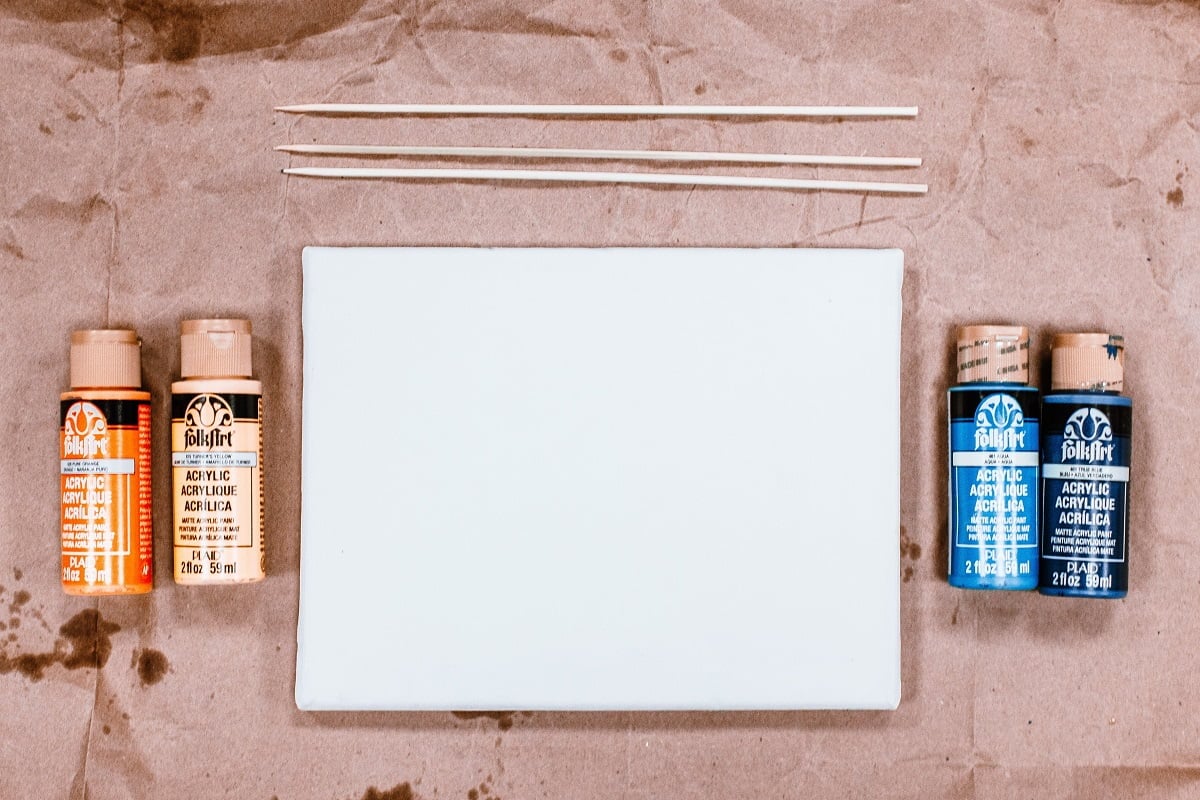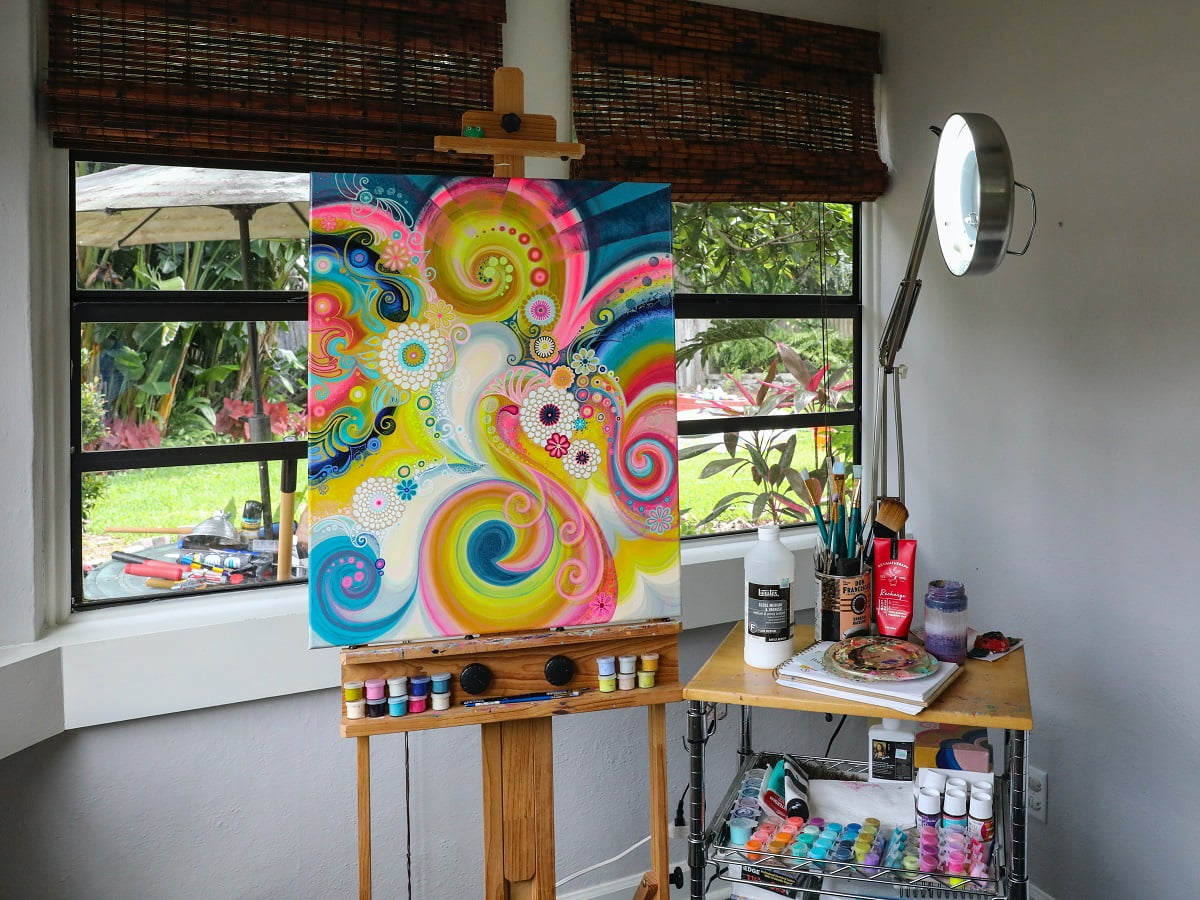As an artist, it’s important to be well-versed in the different art mediums. And one of these art mediums is acrylic paint!

It is a standard method of coloring used by numerous artists today. With the correct application and usage, you can create brilliant art pieces with acrylic paints. Many even apply acrylic for body art, though body paints aren't supposed to contain ammonia and formaldehyde. So, acrylic paint is not suitable for putting on your face and can cause irritation to your skin.
However, this paint is a marvel for paintings and provides great results. But if you haven’t used acrylic paints before, or aren’t too savvy with them, then you may wonder about their durability. After all, you wouldn’t want your precious artwork to fade out after a while, would you?
In that context, you will be delighted to know that, unlike many other coloring methods, acrylic paints last for quite a long time. Besides, they require comparatively less maintenance as well. So, if you want to know precisely how long your art will hold out with acrylic paints, we suggest you keep reading.
And do check out our other article on acrylic Halloween paintings to know more on how you can prepare Halloween decorations with acrylic paints.
What Are Acrylic Paints?

Before we get to the primary point of our discussion, let us discuss a bit about acrylic paints first. Acrylic paint is made by mixing color pigments with synthetic polymer emulsions. These acrylic emulsions are known for being quick to dry, which is why acrylic paintings get cured very fast.
It is unlike other painting methods, such as watercolor or oil paint, which require some time to cure. However, you should know that acrylic paints do share some similarities with watercolor painting. Like watercolors, they are water-based too, which means that you need to add water to the paint before you using it.
But despite being water-based, acrylic paints become water-resistant when dry. In fact, the acrylic resin becomes quite durable when it dries, which makes it pretty resistant to scratching or rubbing as well. With that being said, they are not entirely invulnerable, as there are certain elements that can damage or destroy acrylic paints.
How Long Does Acrylic Paint Last?
As we have just said, acrylic paint is pretty durable. If stored correctly, acrylic paint usually has a shelf life of over 10 years. However, that is subject to the conditions in which you store it.
This paint typically comes packaged in an airtight tube or a small plastic container. And if kept unopened, it will last for the above duration, provided the storage temperature is correct.
On the other hand, for an opened acrylic paint, you need to watch out for contaminants, such as bacteria and mold. If it is not stored properly, the shelf life of an opened acrylic paint will be significantly reduced.
The above is applicable for artworks made with acrylic paints as well. Acrylic paint is one of the most durable art materials out there, and its color lasts for a long time on paper or canvas. In this regard, after application, the acrylic resins form cross-links when completely dried. This cross-linking is what increases the durability of the painting.
Now, the cross-links in the acrylic films do wear out over extended periods. But if stored at optimal temperatures and kept free from mold or bacteria, these processes occur slowly.
At this point, we should specify that the type of acrylic paint also plays a part in its durability. There are two types of acrylic paints available on the market today, one for students and casual users and the other for professional artists.
Artist-quality acrylics are made from high-quality resins, due to which they are more resilient than student acrylics. So, for long-term usage, it is better to invest in artist-grade acrylics, even though it is more expensive than student acrylics.
Causes Of Acrylic Paint Degradation And Their Prevention
You may be wondering now as to how exactly acrylic paints degrade despite being claimed as a durable painting method. That is what we have addressed in this section, along with some preventative measures to keep them from degradation.
1. Exposure To Extreme Temperatures
The acrylic resin from which these colors are made is somewhat sensitive to extreme temperatures. If exposed to extreme heat or cold, the chemical composition of the acrylic resins may change, which will affect the paint’s longevity.
Furthermore, as acrylic paint dries quickly, it can become crusty, flaky, and ultimately unusable when exposed to hot or cold temperatures. In such extreme temperatures, its quick drying property, which is its biggest advantage, becomes its greatest weakness. So, it becomes an important factor to consider if you want to store acrylic paint for a long time.
Optimally, you should keep it at normal room temperatures so that the paint doesn’t dry off too quickly. This is usually between 50 and 75 degrees Fahrenheit, both for storage and usage. Also, make sure it is not exposed to direct sunlight, rain, or snow. If you live in a place with extreme climates, it would be best to store it in an area where the temperature is moderate.
2. Too Much Moisture
We have already stated before that acrylic paint is water-based. So, unless you are using it, exposure to water or atmospheric moisture may reduce its lifespan. This is especially applicable for opened acrylic paint since unopened acrylic paint containers are fully airtight.
The water or moisture may trigger the resin to form cross-links, which will eventually cause it to dry up, thereby making it unusable. Furthermore, excess moisture facilitates the growth of organic contaminants, such as mold, which drastically reduces the shelf life of acrylic paint.
To avoid such issues, make sure that you store your acrylic paint in a dry environment. And if you have opened the container already, then you need to make it as airtight as possible while storing it away. This will make the paint last for a long time.
3. Presence Of Foreign Contaminants
The presence of foreign contaminants, such as dust and microbes can reduce the longevity of acrylic paints. Not only that, but they may also make your acrylic painting and colors look dirty.
This issue is more pronounced in the case of organic contaminants, such as bacteria and mold. Since they steadily multiply, they might damage the paint even more. Moreover, if there are bacteria and mold in your acrylic paint, it will start smelling sour and repulsive.
Such an issue is observed mainly for opened cans of acrylic paint, as unopened cans are fully sealed and airtight, which keeps these contaminants away. Opened cans can trap moisture, which provides a favorable environment for bacterial and mold growth.
So, make sure you seal the paint container firmly before putting it in storage. Ensure that the storage area is clean and dry as well. And if possible, try to use it in a dry place without moisture. That way, your paint won’t develop mold, which, in turn, will improve its lifespan.
Can You Use Expired Acrylic Paint
Since acrylic paint is made from synthetic substances, it doesn’t come with a definite expiration date. But over time, it will inevitably degrade and expire, just like any other material. At that point, it might not remain suitable enough for usage.
However, it can take acrylic paint decades to expire, especially if you store it properly. If you don’t, it will expire sooner than expected. In any case, you can try to salvage the paint using some of the techniques we have discussed below.
You should be advised, though, as these techniques are not entirely foolproof. As a result, you may not be able to salvage any paint, or the paint may not have the same quality as before.
On that note, never try to reuse acrylic paint that has been contaminated with mold, mildew, or bacteria, as that poses a serious health hazard. In that case, dispose of the paint like any other toxic waste.
1. Using A Paint Strainer
If you haven’t used your acrylic paint for a while, it may develop bumps or other texture irregularities. In that case, you can get rid of them using a paint strainer. It will filter out these impurities and irregularities so that the paint texture becomes even.
2. Using Paint Thinner
In many cases, the paint may become too sticky and viscous. This is most commonly observed in the leftover paint that lies at the bottom of the container. So, you can use a paint thinner to thin it out.
3. Re-Hydrating The Paint
Often, old acrylic paint has a tendency to become rigid and crusty when dry. One solution to reuse this dried paint is to re-hydrate it with water. For this purpose, you can add tap water at normal temperature, but warm water works best. When mixed in sufficient amounts, the paint will be restored to its normal consistency.
However, we would suggest not storing this wet paint again, as it may develop mold and mildew. The technique is best suited for small amounts of paint that will be used up quickly.

How Long Does Acrylic Paint Last Final Words
Artworks made with acrylic paint can be magnificent and vivid. And thanks to its long lifespan, your painting will keep looking like new for quite a long time.
But there are certain precautions you should take when storing this paint so that it can last for years. That’s why we have provided some storage guidelines that you can follow. In addition, we have provided some techniques that you can implement to try and reuse the old paint.
And that’s all we have to say about this topic. Stay tuned for more informative guides like this one in the future.
Until then, goodbye!
